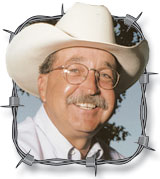Social media. Love it or hate it, it’s here to stay.
Social media is a great way to reconnect with old friends, and it is a quick way to let lots of people know about changes in your life, like the birth of a child, a new job or a marriage. Nothing better than telling 1,000 people your news at one time with just a few stokes on the keyboard.
I like to post things on social media about the fun times at the Crawford Ranch, be it Bill saying or doing something that makes me laugh or the antics of our dog, Nell. I like to laugh, so I want people to laugh and trust me, Bill and Nell are pretty comical.
However, social media has it’s downfalls, and people have the tendency to believe everything they read – no matter how outrageous it might be.
Anti-agriculture organizations have harnessed the power of the web to spread misinformation – and the public is listening.
The Humane Society of Missouri, for example, has more than 42,000 followers, while the Missouri Cattleman’s Association as a mere 7,400 on Facebook. That’s a big difference.
As I write this column, PETA’s Facebook page has 3.3 million followers and a photo of a dairy animal as its cover photo. The photo description says “Animals are not ours to eat, wear, experiment on, use for entertainment, or abuse in any way.”
I respect the opinion of those who opt for a different dietary lifestyle, but I have been known to “share” a few things on social media that poke a little fun at vegetarians (like calling myself a second-hand vegetarian because I eat the cattle that eat the grass). Some of these groups like to call farmers and livestock producers heartless killers and I think that is pretty unfair.
There are some bad guys out there, but the vast majority of farmers and livestock producers have hearts, big hearts, and spend countless hours ensuring their animals are well cared for.
What many of these organizations don’t share with their social media followers is exactly how few of the donated dollars they receive actually go to caring for animals. For example, according to HumaneWatch, a not-for-profit organization that monitors the Humane Society of the United States, the HSUS doesn’t actually operate a single animal shelter. Also, less than 1 percent of its more than $100 million annual operating budget even goes to shelters in the form of grants to help provide for the care of animals.
The Humane Society of the United States generally responds to the criticism by saying that it focuses on the larger, systematic issues affecting animal welfare, but that is also misleading. The HSUS spends millions on lobbying, including ballot initiatives that target family farmers. We’ve seen that right here in the Ozarks. The organization also has a farm animal protection campaign that targets farmers, so it’s not just about dogs and cats, despite the majority of their TV commercials showing pets.
But will these organizations actually pitch in when it comes to helping to care for livestock? There are rescue organizations that will take in mistreated horses and other livestock, but when faced with a large crisis situation, do the organizations really think of all animals?
Many years ago, my family was asked by law enforcement to bring feed, hay and water to a large group of cattle that were starving. What we saw was heartbreaking. There were baby calves trying to nurse their dead and/or dying mothers, cows so weak they couldn’t stand. The calf crop from the year before had never been weaned and there was a lingering odor of decomposition in the air. I will never forget kneeling on the cold, frozen ground holding feed in my hands to one cow, hoping she might take a bite. I piled hay around her in hopes that it might help her be a little warmer, but she died later that night. There was no grass; pastures had been so over grazed that there was nothing but bare ground.
Finally, the courts gave the OK for law enforcement to remove the cattle. We took the bulk of the cattle to care for while the court case against the owner, one of those bad seeds, was pending. Luckily, we got some help from some neighbors who could take in a few as well.
A call was made to one of the animal welfare organizations for assistance with feed and veterinary care. The answer: “Sorry, we can’t help you.” Really?
That was a long winter, the cows got back into decent shape, and as the court case proceeded, the animals were ordered sold by a judge to pay for their care, but the owner got what was left over.
So, to those who think their $19 a month is going to help animals in need, think again. Not all animal welfare organizations are against farmers. There are many in the Ozarks that do wonderful things and help animals in need, but be very particular when selecting an organization to give to.
Next time you are on social media, seek out pro-agriculture organizations and show your support for family farms by simply clicking the “Like” or “Follow” button.
Let’s show that we have a voice on social media as well.
Julie







